Reviews
Stanley Kubrick
UK, 1971
Credits
Review by Ian Johnston
Posted on 10 March 2010
Source Warner Bros. DVD
Categories Kubrick
Does any film have a more entrancing, seductive opening than A Clockwork Orange? Here was Kubrick, after 2001, at the height of his cultural fame and recognition - in Joseph Gelmis’ terms, the ultimate Film Director as Superstar - and at the height of his control of the medium and of us. As an audience we’re mesmerised from the start, by the slow, slightly-distorted, slightly-disturbing strains of Purcell played on a Moog; the glaring primary-colour of the credit stills: bright red, blue, and red again; and the opening close-up on Malcolm McDowell—the young McDowell, at his most handsome, arrogant, and bewitching.
In that first close-up McDowell holds us in his gaze, staring out directly, brazenly into the camera, his heaving chest hinting at the barely contained violence. At the same time Kubrick exercises his own grip on us with the slow, controlled zoom-back that reveals Alex’s fellow droogs and the drugged-up spaced-out world of the Korova Milk Bar with its eroticised furnishings and brawny bouncers in white jumpsuits. And then there’s McDowell-as-Alex’s now famous voiceover narration:
There was me, that is Alex, and my three droogs, that is Pete, Georgie, and Dim, and we sat in the Korova Milkbar trying to make up our rassoodocks what to do with the evening. The Korova milkbar sold milk-plus, milk plus vellocet or synthemesc or drencrom, which is what we were drinking. This would sharpen you up and make you ready for a bit of the old ultra-violence.
And ultra-violence is what we get as Kubrick repeats the slow pull-out opening on the next two sequences, where Alex and his droogs first beat up an old drunk tramp and then stage a rumble with a rival gang. But already there’s a sense that something in this film is not working. By rights the drunk’s speech (on the lack of law and order, and on the lack of a place for the old in this “stinking world” ruled and abused by the young) should be a moment of authorial voice, where the identification with Alex that the film has posited so far can be called into question. The words are there, but Kubrick is simply not interested in following through on this. Surely, we would think, this is the moment when Kubrick pulls us back from this identification with Alex and, through the figure of the tramp, shifts the ground of the film’s argument, pointing to the human and societal costs of Alex’s “charm.” But this calls for a more complex and more profound film than Kubrick is prepared to offer us. Instead, he allows Paul Farrell as the tramp to subside into the usual grimacing he encourages from other actors in the course of the film (Aubrey Morris as Alex’s social worker Mr Deltoid, Patrick Magee as the wheelchair-bound Mr Alexander). And he very quickly moves on to treating in comic mode�cue Rossini’s “The Thieving Magpie”—the gang rape of a young woman. Which is also a reminder that women in A Clockwork Orange - the young woman here, Mrs Alexander in the subsequent home invasion scene which itself is cued to McDowell’s parody of Gene Kelly’s “Singing in the Rain” - seem to be there to be stripped naked for the delectation of Alex, of Kubrick’s camera, and, forcibly, of the audience.
Kubrick declared serious intentions for his film. It was, he said, for example, to Michel Ciment, concerned with the central question of free will.1 So, when Alex is subjected to the government-run aversion therapy Ludovico Technique, which remodels his personality by suppressing his impulse to violence but which at the same time kills off his love of Beethoven, this is seen as a loss of his essential humanity—the ability to choose.
Two comments are worth making here. One is that with the film’s turn to broad political satire - the right-wing government minister who originally promoted the Ludovico Technique allows Alex’s return to his violent self as a cynical political ploy - Kubrick offers a banal and insufficient treatment of the problem at the core of the story: that is, how society deals with violence within it. A Clockwork Orange has nothing of the complexities explored, for example, by Krzysztof Kieslowski in A Short Film About Killing. Kieslowski’s work is thoughtful, deeply-felt, humane and moving in a way that A Clockwork Orange cannot even begin to approximate, and one thing Kieslowski is incapable of doing is to depict an act of violence as a joke, with a cynical smirk and a shrug. The murder at the centre of A Short Film About Killing is a long-drawn-out struggle, a spectacle that is made deliberately painful to watch. Here, there’s an interesting parallel with A Clockwork Orange, because just as Kubrick portrays Alex’s victims (think especially of the Cat Woman) as less-than-human caricatures in effect inviting the violence meted out to them, so you might think that the attack on the taxi driver is somehow justified by the foulness of his character. Except that Kieslowski refuses to allow that interpretation and asserts the humanity of the taxi driver and the value of his life at this moment of his death, just as he will with the young killer and his legally-sanctioned execution. Can we imagine A Short Film About Killing that focuses exclusively on the character of the young killer, building him up sympathetically and reducing all around him to laughable caricatures? No—but this is precisely what Kubrick does in A Clockwork Orange, a strategy that Kubrick signposts in the film’s second sequence when he abandons the drunk tramp, in spite of the implications of his speech, to his fate.
A second problem is how Kubrick has cherry-picked his theme from Anthony Burgess’ novel. Burgess was a writer whose Catholic beliefs were central to his work. He believes in original sin, the concept of a flawed, sinning - and, in Alex’s case, a violent - humanity that still has the potential to choose good. It is critical to Burgess’ conception of his novel that it originally ended on a final chapter (omitted in the U.S. version) where Alex through the conscious exercise of his own free will turns his back on his violent past.
I can’t say I have much interest in these religious themes, but it’s very clear that Burgess’ novel is a deep and resonant working-through of his concerns. Kubrick, on the other hand, is simply uninterested in the religious aspects of the work, so all he’s left with is an expansion on the banal political satire that was already present in the novel. Burgess also does a far better job of balancing Alex’s appeal with the establishment of a certain critical distance between Alex’s “voice” (the novel is his first-person narrative) and the reader. This is effected by Burgess through the creation of a Russian-influenced youth dialect in which the entire narrative is written. It’s literally a struggle to parse meaning out of the sentences and this creates a wall of language forming a barrier between Alex and the reader.
Academic writers like Thomas Allen Nelson or Mario Falsetto have attempted to argue that Kubrick has achieved a similar effect through his stylistic choices. Falsetto, for example, places a lot of stress on the “unusual tension between the dominant, subjective mode of presentation” [i.e. the engaging theatricality of Alex’s performance] “and the distanced, emotionally uninvolving stylistics of the film”2; and Nelson even suggests that the ultimate effect of Kubrick’s distanciation devices is to “[undercut] a mindless identification with Alex.”3 I’m not convinced by these kinds of arguments, which fall down in one crucial area: they either fall to address (Falsetto) or, it seems, fail to see (Nelson) what is for me the central problem of A Clockwork Orange, namely Kubrick’s total identification with Alex. I don’t imagine that this was a conscious strategy on Kubrick’s part but the result of a whole series of aesthetic choices—of actor, of music, of shooting style. There’s a sense that Kubrick lost control of his material because of his loss of the necessary critical distance. This is literally embodied in the many production stills you can find of Kubrick with his handheld camera sticking close to the rape and mayhem, appearing as one more droog in Alex’s gang. After establishing the narrative perspective as that of Alex, Kubrick’s treatment of his victims is the next inevitable step, whether he turns them into grotesques (Mr Alexander) or implies that they’re to blame for the violence meted out to them (the Cat Woman). In the total collapse of Kubrick’s artistic project, there’s nothing left for him but to end the film with a piece of knee-jerk cynicism (“I was cured all right!”)—pathetic, gratuitous, and unworthy of the great film artist that Kubrick undoubtedly was.
- Michel Ciment, Kubrick: The Definitive Edition, New York: Faber, 2001, p. 149. ↩
- Mario Falsetto, Stanley Kubrick: A Narrative and Stylistic Analysis, 2nd ed., Westport: Praeger, 2001, p. 54. ↩
- Thomas Allen Nelson, Kubrick: Inside A Film Artist’s Maze, expanded and rev. ed., Bloomington: Indiana U.P., 2000, p. 156. ↩
More Kubrick
-
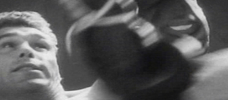
Stanley Kubrick’s Early Documentaries
1951-53 -

Fear and Desire
1953 -

Killer’s Kiss
1955 -
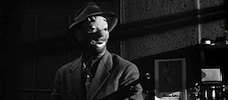
The Killing
1956 -
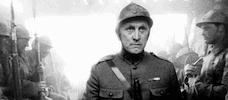
Paths of Glory
1957 -
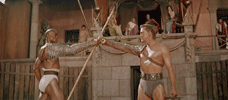
Spartacus
1960 -

Lolita
1962 -
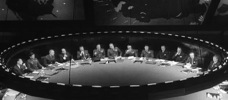
Dr. Strangelove or: How I Learned to Stop Worrying and Love the Bomb
1964 -

2001: A Space Odyssey
1968 -

A Clockwork Orange
1971 -

Barry Lyndon
1975 -
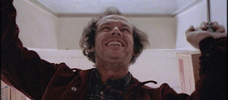
The Shining
1980 -

Full Metal Jacket
1987 -
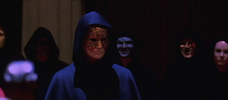
Eyes Wide Shut
1999 -

A.I.
2001
We don’t do comments anymore, but you may contact us here or find us on Twitter or Facebook.



